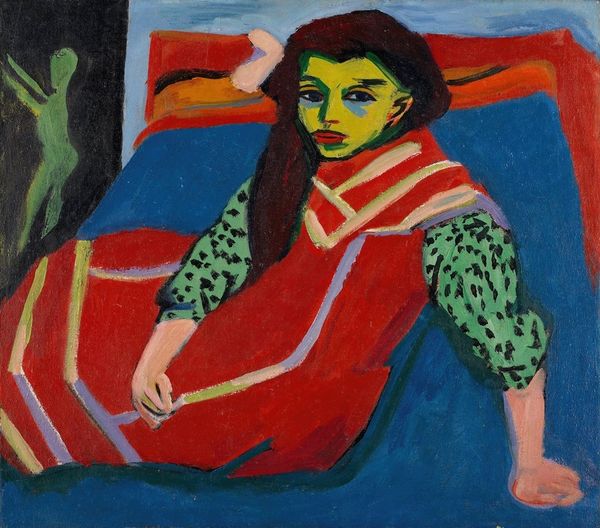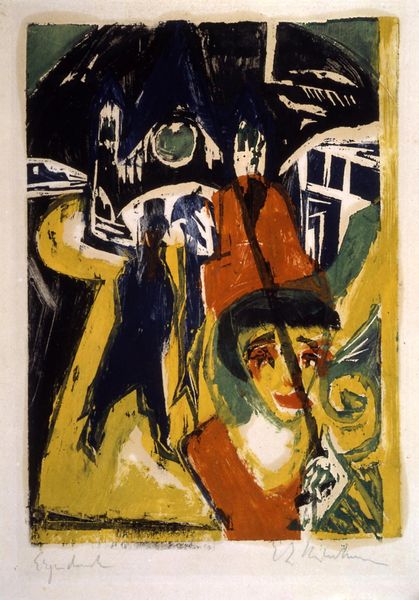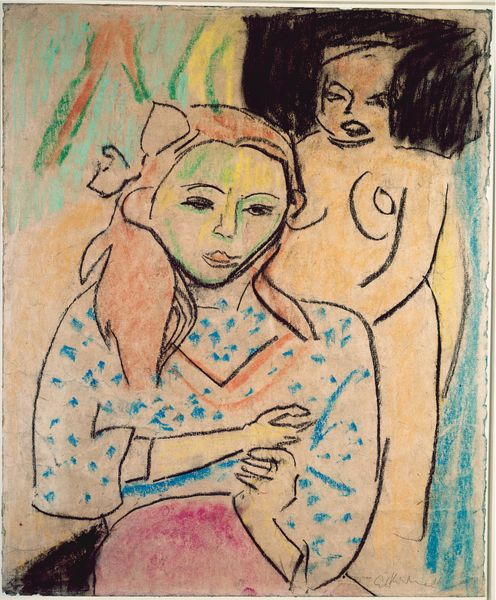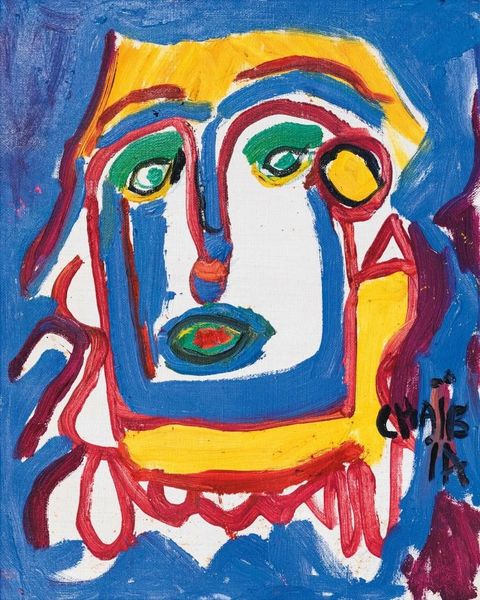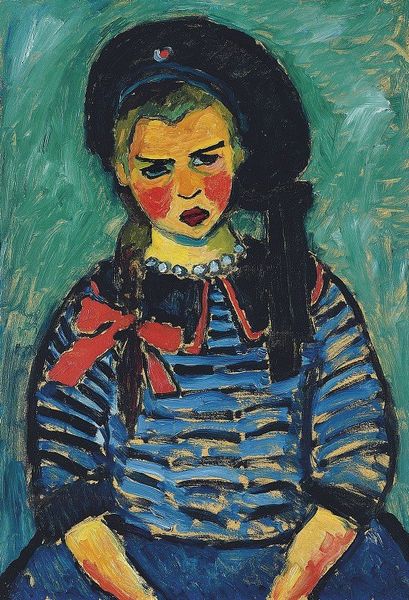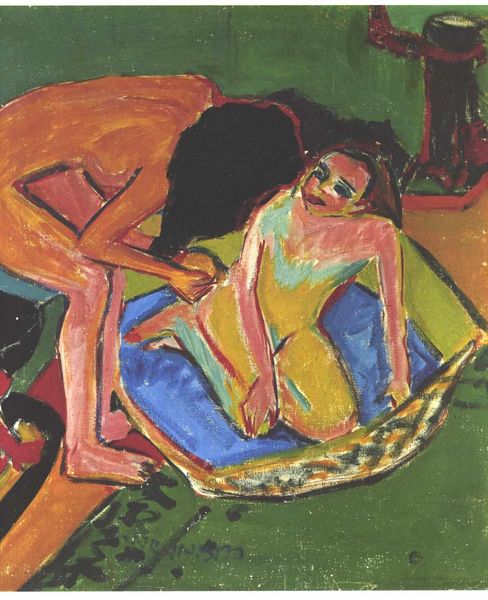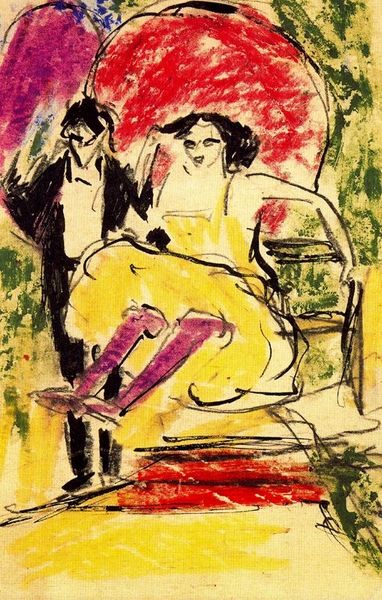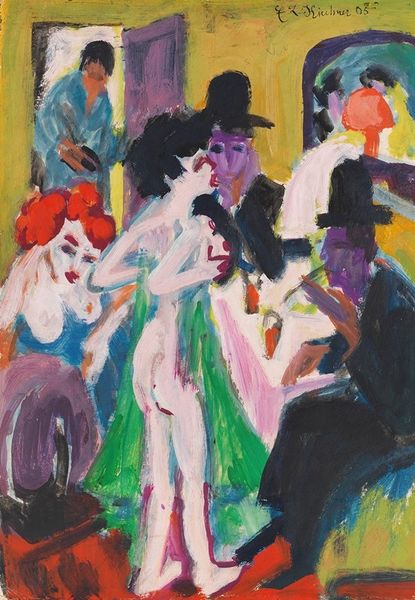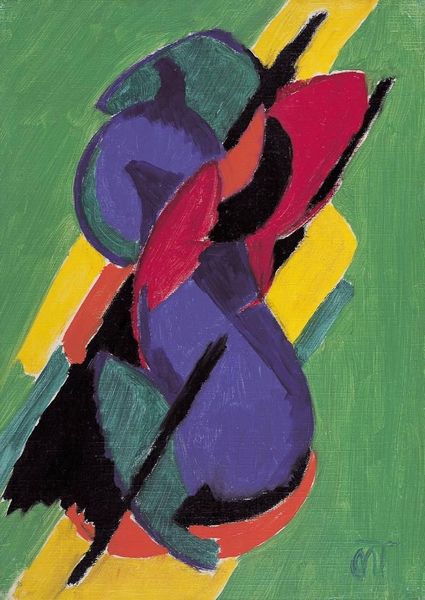
painting, oil-paint
#
portrait
#
figurative
#
self-portrait
#
painting
#
oil-paint
#
german-expressionism
#
figuration
#
expressionism
#
portrait art
#
modernism
#
fine art portrait
Copyright: Public Domain: Artvee
Curator: It's a striking painting. I always come back to this one. "Fränzi in front of carved chair" painted in 1910 by Ernst Ludwig Kirchner. Oil on canvas. What do you see? Editor: A sort of vibrant unease, a nervous energy simmering just beneath the surface. The colours are doing something to me. It’s bold. And is that figure in the background looking down? Curator: The colours are definitely doing their job, aren’t they? Green skin, the sharp reds of her lips and clothing…Kirchner was diving headfirst into the emotional possibilities of colour at this point. It’s expressionism, after all, turning feelings inside out. As for the background figure, yes! That peering woman becomes a dark halo around the main subject’s head. Editor: What’s fascinating is that colour, of course, holds cultural coding – green associated with envy, sickness, otherness, maybe all of that feeds in to this portrayal. And that looming figure in the background...a judgemental matriarch, perhaps? A representation of societal pressures bearing down on Fränzi? Curator: Perhaps, or perhaps just the artist exploring different planes. I find it brave – Fränzi seems unafraid to meet your gaze. Do you notice the symmetry in the painting? Despite the raw application of paint, everything feels very consciously balanced. Editor: Yes, despite the initial feeling of everything almost exploding, there’s that strong structure. The carved chair itself, in the title… why include it, do you think? I'd even ask about the face of that chair: animal, demon or just decoration? Curator: The carved chair perhaps speaks to a grounding – it's ornate and fixed in reality, tethering Fränzi and that floating figure behind her. Kirchner liked to play with expectations like that – challenging beauty conventions with an unflinching portrayal. It suggests that reality is layered with emotion, it is all a carved chair. Editor: Absolutely. And, in that sense, the carving and patterning all reinforce the sitter's subjective experience – that inner world reflected back at the viewer. I find myself feeling almost claustrophobic now, caught within those emotional crosscurrents. Curator: Expressionism does that to you, doesn’t it? Burrows right under your skin. This piece is especially resonant; it encapsulates something essentially raw. A portrait that refuses to let you off the hook. Editor: Indeed. It reminds us that portraits aren’t merely depictions, but loaded cultural and psychological projections – dialogues between artist, sitter, and viewer, all mediated through potent symbols.
Comments
No comments
Be the first to comment and join the conversation on the ultimate creative platform.
